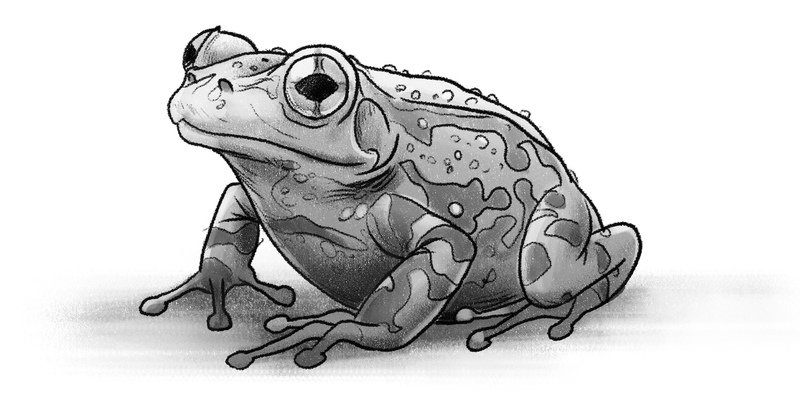
frog drawing
Drawing is one of the most delightful frog drawing ways to express creativity, and among the wide array of subjects, frogs are uniquely appealing. From their adorable wide-eyed expressions to their intricate features like webbed feet and smooth, slick skin, frogs offer a charming challenge for artists of all levels. In this detailed guide, we’ll explore how to draw frogs with ease, delving into techniques, tools, and approaches to improve your frog drawing skills. Whether you’re a beginner or a seasoned artist, this article will guide you through everything you need to know to draw a frog that jumps off the page. Let’s hop right into it!
1. Why Frogs Make Fantastic Drawing Subjects

Frogs are one of nature’s most fascinating creatures, not just because of tfrog drawing heir role in ecosystems but also due to their charming and recognizable features. Whether you’re captivated by their various species, the colors that decorate their bodies, or their quirky characteristics, frogs are perfect subjects to study in art. Their versatile form can be simplified for a cartoonish style or explored in great detail for a more realistic portrayal.
Frogs as an Artistic Challenge
One reason artists love drawing frogs is because of the challenge frog drawing they present. Frogs have a unique body structure compared to many other animals, featuring elongated back legs, large bulging eyes, and smooth, rounded bodies. This makes them a rewarding subject for artists looking to practice anatomy, proportion, and shading. They combine organic shapes with complexity, pushing artists to balance smooth lines with intricate details.
Versatile Drawing Styles
Another reason frogs are excellent subjects is the versatility in artistic style they offer. frog drawing You can choose to draw a simple, almost cartoonish frog to practice basic shapes and lines, or you can take on a more advanced project by drawing a realistic frog with every crease of its skin, texture of its legs, and shine in its eyes. Frogs can be portrayed in a variety of moods—whether they’re sitting still on a lily pad, in mid-leap, or stretching out on a rock—each pose brings its own narrative.
Frogs in Pop Culture and Art
Frogs also have a place in art history and pop culture, from ancient depictions in mythology to frog drawing modern cartoon characters. Their playful and mysterious nature has inspired artists in various mediums, from paintings to digital designs. Frogs can represent growth, transformation, and connection to nature, making them symbolic creatures worth drawing.
2. The Anatomy of a Frog: Understanding Structure for Better Drawings
Before you put pencil to paper, it’s essential to understand the basic anatomy of a frog. While frog species vary greatly in size, color, and form, they share a core anatomy that is key to accurate drawings. Understanding this structure will make your frog sketches more realistic and dynamic.
Head and Eyes: The Frog’s Iconic Features
A frog’s head is relatively flat, but the most noticeable feature is its large, rounded eyes. These eyes tfrog drawingypically sit high on the head, giving frogs their distinct, alert look. The placement of the eyes is crucial in your drawing. When drawing frogs from different angles, the eyes will change perspective, but they remain a key focal point that defines the frog’s expression.
To draw the head, begin with an oval shape, then adjust it depending on the species you’re sketching. The eyes can be drawn as circles or ovals depending on the angle of the frog’s face. Frogs have a slight indentation on their heads where their mouths begin, giving them a gentle smile-like appearance.
Body Structure: Frogs’ Compact but Powerful Frame
The body of a frog is another essential element to capture. Despite their small size, frogs are incredibly f rog drawing muscular, especially in their legs, which are adapted for jumping. The frog’s body is usually depicted as round or oval, but its structure is far from simple. Frogs have a smooth upper torso with a slightly bulging abdomen. This allows you to play with shading and contour lines to emphasize their roundness.
Focus on where the legs attach to the body, as frogs have long, flexible limbs that extend outward frog drawing in most sitting or leaping positions. Their bodies might look smooth, but their form has depth that requires proper shadowing and structure. You can add details like skin folds and textural variations to indicate movement and tension.
Legs and Feet: The Key to Frog Movement
A frog’s back legs are its defining characteristic when it comes to movement. Frogs are jumpers, and their frog drawing hind legs are specially built for this purpose. These legs are long, muscular, and tapered down to webbed feet. Start your drawing by extending two lines outward from the lower body to establish the length of the back legs. These lines will serve as the framework for the legs. You can then fill them out, adding muscles and defining the joints.
The front legs are smaller and less muscular than the back, but they are still essential for balance and landing when a frog jumps. Frogs typically have four fingers on each hand and five toes on each foot, with some species having webbing between their digits.frog drawingThe front legs are smaller and less muscular than the back, but they are still essential for balance and landing when a frog jumps. Frogs typically have four fingers on each hand and five toes on each foot, with some species having webbing between their digits.
3. Choosing the Right Tools for Frog Drawing
The tools you choose for drawing frogs will have a significant impact on the final look of your art. Different tools provide different textures and effects, so selecting the right ones can help you bring your frog to lifefrog drawing in ways that suit your style.
Pencil Drawing: The Basic Tool for All Artists
Pencil is often the go-to tool for artists because of its versatility and ease of use. When drawing frogs, you can use a range of pencils to create depth and texture. Start with a hard pencil (H or 2H) for sketching basic outlines and lightly mapping out the frog’s shape. Once you have your outline, switch to a softer pencil (2B, 4B, or 6B) to create more intense shadows and add detail to the frog’s skin, eyes, and limbs.
If you want to achieve a realistic look, focus on gradual shading with a range of pencils to capture the frog drawing smooth, often shiny appearance of a frog’s skin. Smudging tools like a blending stump can help create smoother transitions between light and shadow.
Colored Pencils and Markers: Bringing Vibrant Frogs to Life
If you’re looking to add color to your frog drawing, colored pencils and markers are excellent options. frog drawing Frogs come in a wide array of vibrant colors, from deep greens and browns to bright reds, oranges, and blues. Colored pencils allow you to layer colors, providing a gradual build-up of tone and shade. You can also experiment with blending different hues to capture the unique skin patterns and shades of various frog species.
Markers, on the other hand, are bolder and more immediate, providing a more graphic or cartoonish look. When using markers, be aware of how they bleed and blend, as this can affect the clean lines of your drawing. For cartoon-style frogs, markers are ideal for achieving solid, uniform colors.
Watercolors and Paints: Creating Depth and Texture
Watercolors and acrylic paints are fantastic mediums for adding a realistic touch to frog drawings. frog drawing Frogs often have a wet, shiny appearance, which can be beautifully captured with watercolors. The fluidity of watercolor allows you to blend colors seamlessly, mimicking the natural gradients seen in frog skin.
For more defined details, you can layer paint on top of each other or use masking fluid to retain white highlights, giving your frog a more dynamic and three-dimensional look. Acrylics, being thicker, offer texture that can emphasize the ruggedness of a frog’s environment, such as the roughness of rocks or the smoothness of water surfaces.
4. Step-by-Step Guide to Drawing a Simple Frog
Now that we’ve explored the anatomy and tools, let’s jump into a step-by-step process of drawing a frog. This section will guide you through drawing a simple frog sitting on a lily pad, a classic and beginner-friendly pose that will help you understand the fundamentals.
Step 1: Start with the Basic Shape
Begin your drawing by lightly sketching the basic shape of the frog’s body. Draw an oval for the main body and a smaller circle for the head. These two shapes will serve as the base for your drawing. Don’t worry about perfection at this stage—this is just a rough sketch to guide the proportions.
Step 2: Add the Limbs
Once you’ve got the body in place, you can start drawing the legs. Use two lines to mark out the frog drawing length of the frog’s hind legs, extending them outward from the body. For the front legs, draw shorter lines coming down from the base of the head. Keep the lines simple at first, focusing on capturing the angles and placement.
After placing the leg lines, you can add volume by sketching the muscles of the legs, paying attention to where the joints bend. For the feet, draw webbed toes extending out from the end of each leg.
Step 3: Define the Face and Eyes
Now, move on to the frog’s face. Add large, circular eyes on top of the head. You can give the frog a more cartoonish look by making the eyes larger, or you can stick to a realistic size. Frogs’ eyes are typically very prominent, so make sure they stand out in your drawing.
Next, draw the mouth. Frogs have wide, subtle mouths that can give them a slightly smiling appearance. A simple curve or a straight line will work for this step.
Step 4: Detail the Frog’s Body
Once the general outline is complete, you can begin adding details. Define the shape of the frog’s body, adding contours to give it more volume. Shade the areas that would be in shadow, such as under the legs and along the sides of the body. If you’re going for a more realistic look, pay attention to the texture of the frog’s skin, adding bumps or ridges where necessary.





